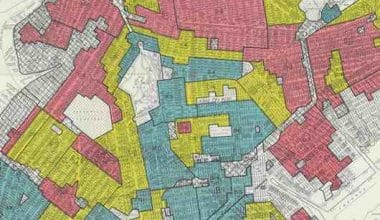In order for the economy to grow, certain rules must be followed. With no rules in place, economic rights are at risk of being violated. This article centers on administrative law, the officials (judges) implementing the rules or functions in the economy, its examples, and its types.
What Is an Administrative Law?
Administrative laws are a set of rules that govern both the federal and state administration’s regulation of government agencies and the economy as a whole. It is also a law that governs the activities of federal and state bodies.
Administrative law is the set of rules that govern the executive branch of government and its decision-making. The executive branch is also known as law enforcement or regulations, and the rules cover the areas of international trade, transport, social, economic, etc. It is also a public law or regulatory law.
In the twentieth century, the administrative law body created more government bodies to regulate the social, political, and economic affairs of the nation.
How Does Administrative Law Work?
In the United States of America, the legislators or congress create the administrative law and the laws guide the affairs in which the executive bodies operate or work. As the economy expands over the years, they have to form more administration bodies like the department of labor for labor, the Federal Communication Commission for telecommunications, e.t.c.
As the administrative body increases by the day, the administrative law must change so that the law can guide the new operative bodies and give them their power, like the right to enforce, draft, e.t.c., in their positions in which the economy must obey. In the law, the agency must give a temporary notice to the persons for notice at least 45 days prior to the date of the public hearing. After the action is completed by the office, there will be no more adoption, or amendment, without giving public notice.
Roles of the Administrative Law
As the administration grows, each one has a role to play. Their role helps in the protection of individuals in the country and the economy as a whole. As the law governs both the federal and state bodies, which make the rules to govern other bodies. The president governs the federal departments. The state level is governed by the mayor or governors. Here are the roles of the regulatory bodies, namely;
#1. Investigation Agencies
They help to collect facts and evidence for investigations in order to know the problem and give solutions.
#2. The Courts
The court has agencies that manage the affairs of the regulator’s activities and have specific functions.
#3. Administrative Procedures Act
This regulatory body sets standards for exercising decision-making power. They also give authority to the administrative law judge, who is quasi-judicial and settles complex disputes both at the federal and state levels. In the U.S., the APA was formed in the year 1946. The basic purposes of the APA are:
- Information shared in the house requires the agencies to make public information about their organization, procedures, and rules.
- They provide a means for public participation in the rule-making process.
- They establish uniform standards for the conduct of formal rulemaking and adjudication.
- They execute or define the scope of judicial powers to supervise the administrative authorities.
- They give liability to legal public servants.
Administrative Law in the United States
In the U.S., their administrative agencies are controlled by executive bodies, also known as independent bodies or the Congress, like the Federal Trade Commission, etc. Few of the bodies are controlled by legislative or judicial bodies. The executive bodies are controlled by the president and led by secretaries, who are also members of the U.S. cabinet.
Congress also creates special bodies that help in some areas of the law, known as Article I tribunals. Their agencies’ steps are from the APA, Organic Statutes, Informal Agency Practice, and Agency Rules. And they all follow the requirements of the APA (Administrative Procedure Act), formed in the year 1946. At the state level, the ULC (Uniform Law Commission) was also formed that year. Later in the year 2010, it became a model known as the MSAPA (Model State Administrative Procedure Act). It enables the decision-making of the new administrative bodies.
The best sector in the U.S. with many officials is the agricultural sector because it grows by the year and it attracts external bodies like the international.
Administrative Law Judges
The central panel is the one that chooses the administrative law judges, who become part of the executive bodies in rulemaking decisions, and they can hear both official and non-official disputes. They are not administrative judges. Their functions are to carry out determinations about questions of fact and law. They are to give authorities things like subpoenas, issue rulings, administer oaths, etc. And they participate in different agencies like the Social Security Administration, the U.S. postal service, etc. In the U.S., the ALJ controls both the adjudication and bench trials, takes testimony, etc.
The administrative law judges can hire an attorney’s advisor who serves as a judicial law clerk for Article III judges and assists the ALJ in writing, researching, making orders, etc. At the state level in the U.S., the ALJ has a special field like tax law. Some states’ administrative law judges have the same role as their federal counterparts and dress like administrative judges depending on the rules of the state.
Types of Administrative Law
The commissions or government agencies (central panel) make the administrative laws, which are also part of the executive bodies. Administrative law is of two types. They are;
#1. The Rules and Regulations
The rules and regulations are rules possible to govern the affairs of the country which the administration bodies need to follow to maintain peace and order for the growth of the economy. As the executive bodies create the administrative law, the country will become developed. If there are no laws or lawmakers in the economy, the violation of rights and other problems will occur, which will make the economy underdeveloped.
#2. The Administrative Decisions
This is one of the types of administrative law where decisions are mostly for public service employees or government officials. They are known as ministerial decisions or administrative determinations, which are made for the enforcement of the improved rules or guidelines that give the authority to give information and utility of the goals within the economy.
The Functions of Administrative Law
Administrative law is a set of rules that the government creates to serve the economy, the executive bodies, and the bar. Here are their functions;
- The official bodies have different sectors that each do their own work for the development of the economy. It is a public law, also known as regulatory law.
- So as to know how to implement it in the economy, we give a copy of a magazine with its new rules to the members because some of the rules are not in the law.
- They help in investigating facts, getting proof, and finding solutions to problems. They punish those that violate the law.
- Law bodies also provide safety measures for individuals and protect human rights.
- The law bodies can also hold hearings, official or not, levy penalties, conduct inspections, etc. They are the environmental protection agencies (EPA), the department of homeland security, etc.
- They also provide attorneys that help in complex situations. They get their authority from the constitution and grant Congress the right to make laws and carry out their duties. These bodies are;
- The president
- Federal Communications Commission, and more bodies.
What are the Purpose and Functions of Administrative Law?
The creation of government agencies, the functions they carry out, and the guidelines they must abide by all make use of administrative laws. The Administrative Procedure Act (APA) is the law that tells all federal and state agencies how to do their jobs and what their rules, policies, and laws are. The APA also makes a distinction between two other types of administrative tasks: making rules and making decisions. Judging any party who might be breaking the rules or laws of a government organization is known as adjudication. It is the process of enforcing the agency’s regulations and guidelines. Also, making rules and making decisions can be done in a formal or informal way, but both are seen as binding. The APA offers non-binding recommendations regarding how agencies should conduct themselves.
What type of law is administrative?
There are a few other names for administrative law, including regulatory law and administrative regulations. These laws are intended to control the establishment of new government agencies as well as their day-to-day operations, and they do so on both the federal and state levels.
What Type of Law is Administrative?
There are a few other names for administrative law, including regulatory law and administrative regulations. These laws are intended to control the establishment of new government agencies as well as their day-to-day operations, and they do so on both the federal and state levels.
Administrative Law Examples
Since the development of the economy, there have been rules that the official bodies follow to make the economy better. These administrative law examples are the legal rules of the country that the administrative law bodies create. These examples are;
Examples of administrative law bodies are the FDA, EPA, etc. They regulate the protection of individuals, like the operation of the social security administration. These agencies get their protection from the rules so as to allow them to carry out their functions.
One example of administrative law is that if there is a lack of food supply in the economy or a violation of human rights, they are the agencies entitled to solve each problem.
When it comes to dealing with the medical department or transportation, they are the officials for that, and another body will not do the work. The way officials do their duties is by sectors, which are the boards, agencies, and commissions. They find ways to solve problems in their field, like the shortage of food. They can get professionals like the Labor Commission, the Social Security Administration, the Unemployment Commission, et cetera, to help in the agricultural sector. It is also part of the examples of law officials.
How Was Administrative Law Developed?
Administrative law is a branch of law that has only recently emerged. It arose when many government agencies were set up during the administration of President Franklin D. Roosevelt in response to the Great Depression and the New Deal of the 1930s. Concerns over these agencies’ ability to abuse their power led to the passage of the Administrative Procedures Act in 1946. The APA did more than just grant courts the power to review agency judgments; it also created rules for how agencies should go about developing new rules that would benefit from public input.
What Do Administrative Agencies Do?
There are executive, legislative, and judicial roles performed by administrative agencies. Executive power entails carrying out the law and carrying out agency regulations. The rule-making process within agencies is what fulfills the quasi-legislative role of regulating the economy. An agency’s quasi-judicial role typically includes some form of adjudicatory process for dealing with infractions of laws or regulations in the jurisdiction over which it presides. Because they perform all three of the government’s conventional roles, agencies are sometimes referred to as the “fourth branch.”
What Happens at an Administrative Hearing?
Each party in the hearing presents supporting data and arguments, much as they would in a court case. Opening comments, documentary evidence, witness testimony, and closing arguments are all included in the hearing. A brief may also be required from each party. The burden of proof rests with the person filing the complaint or administrative appeal. The ALJ often presents the parties with a draft conclusion following the hearing, which they may oppose. Prior to the ruling becoming final, the ALJ will take into account any objections and make any necessary modifications.
Can You Appeal a Decision After an Administrative Hearing?
A decision made following an administrative hearing may indeed be appealed. If you keep an exhaustive and accurate record of the proceedings, this could eventually lead to a review by a state or federal court. Although the standard of review varies depending on the circumstance, courts often accord great deference to agency judgments. However, you often need to use all administrative remedies before going to court. Thus, you must first exhaust any internal appeal processes made available by the agency.
Conclusion
As the economy develops year by year, so does administrative law. The law covers both the official bodies and the economy as a whole (at the federal and state levels). Anyone that violates it, even though it is an official, will face the penalty. The origin of the law in the U.S. was in the year 1920, and it covers a wide range of government programs or policies. The law is broad and complex, some of it written and others not. To avoid violating the law, you can get to know their agent for assistance.
Administrative Law FAQs
What is the main source of administrative law?
The main source of the law is the statute, which is from the Constitution. It is where the official bodies get their powers.
Who makes administrative law?
The president is the one that makes the administrative law and is from the executive body. The officials have the authority to create laws through Congress.
What are the types of administrative law agencies?
In administrative law agencies, there are two types. The president creates the executive officials and the Congress creates the other bodies like the legislative officials.






